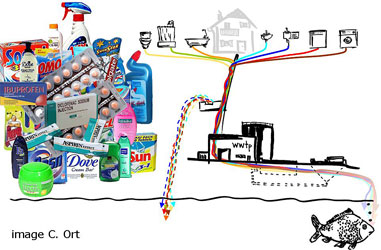Department Urban Water Management
Drug loads
Assessing drug loads in sewers
The reliable prediction of specific substances such as pharmaceuticals, drugs and their residues in engineered and environmental systems is important for several reasons. On the one hand, environmental risk assessment benefits from accurate model predictions, as this would help assessing input fluxes to wastewater treatment plants, discharged loads from combined sewer overflows or optimally allocate limited resources in monitoring campaigns. On the other hand, a detailed understanding of the involved processes would be useful to learn from sewers about societal processes (e.g., illicit drug use).
Wastewater monitoring could provide epidemiologists and policy makers with evidence-based data that can be obtained in real-time and at only a fraction of the cost of population surveys. While chemical analysis on the substances are readily performed, it is challenging to assess the influence of factors so diverse as variable pharmacokinetics, mobility of the population, sewer leakage and transient transport phenomena of compounds on the uncertainty of estimated drug use figures.
To this aim, an integrated mathematical model to predict drug loads and their metabolites in sewer networks is being developed. The stochastic model assimilates information from different sources and quality levels, such as census data, epidemiological and socio-demographic information, results from pharmacokinetic and clinical trials and information on urban drainage infrastructure and wastewater hydraulics.
The model could then be used to obtain posterior estimates of drug use prevalence, efficiently communicate among researchers, guide future investigations and optimally design monitoring campaigns.

